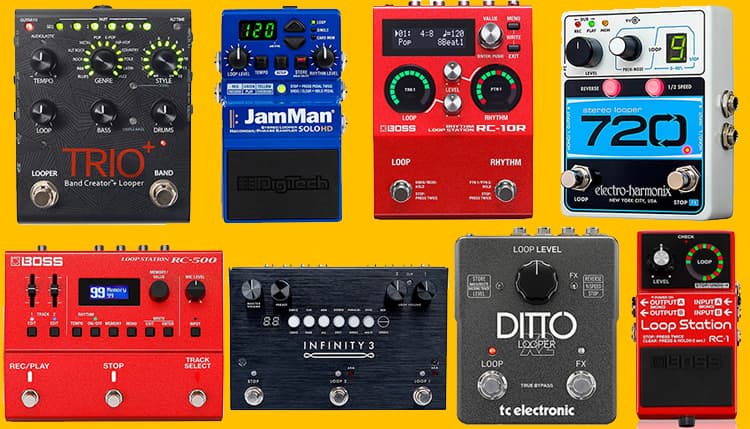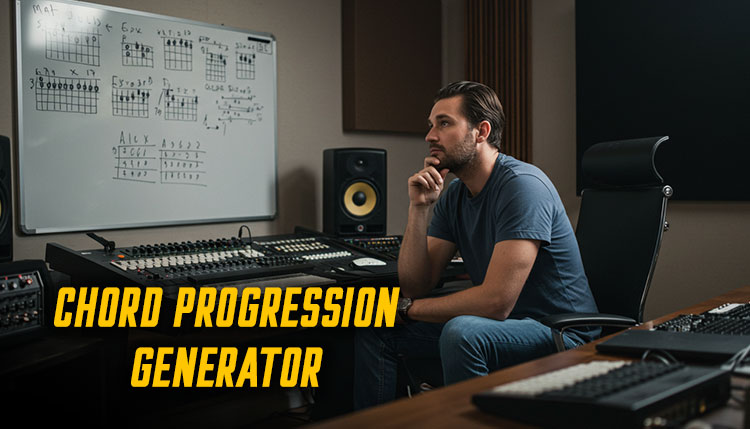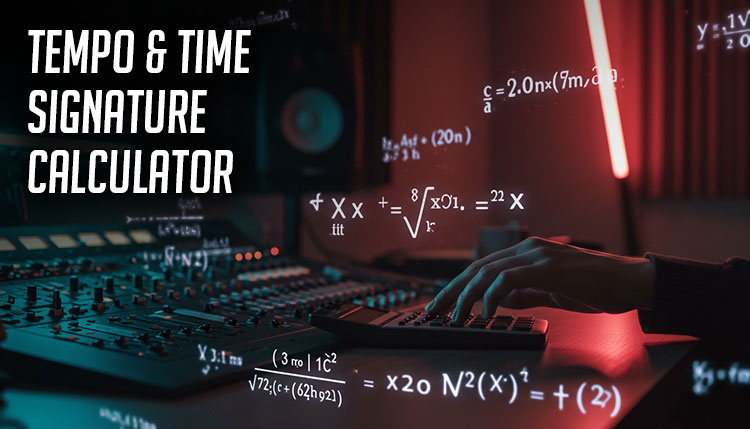Picture this: You’re on stage, laying down a sick guitar riff, and suddenly, with the tap of your foot, you’re harmonizing with yourself! That’s the magic of a looper pedal, folks.
These nifty devices have become a musician’s best friend, allowing solo artists to sound like full bands and giving creative players endless possibilities.
Did you know that Ed Sheeran, one of the world’s most famous loop artists, started his career with just a guitar and a looper?
Now it’s your turn to find the best looper pedal that’ll take your music to new heights. Let’s dive in and explore the world of looping!
What is the Best Looper Pedal?
Here are my top picks for the best looper pedals. In no particular Order.
1. Boss RC-1oR Loop Station
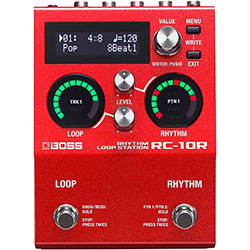
Description: The Boss RC-10R is a sophisticated looper pedal that combines advanced rhythm functionality with powerful looping capabilities. It’s designed for musicians who want a professional backing band experience with deep rhythm programming options while maintaining intuitive looping control. The RC-10R stands out for its extensive rhythm section, featuring over 280 preset rhythm styles across multiple musical genres, making it an ideal choice for both practice and performance.
Key Features:
- 99 hours of stereo recording time
- Two independent stereo tracks
- 280+ preset rhythm patterns
- 16 unique drum kits
- 99 memory locations for loop/rhythm combinations
- Rhythm customization with A/B variations
- MIDI sync capability
- LCD display for detailed visual feedback
- USB connectivity for data backup and transfer
- Tempo sync between rhythm and loop sections
- Fill variations and rhythm pattern switching
- Dedicated footswitches for rhythm and loop control
- WAV file import/export via USB
- Automatic tempo detection
- Real-time pattern variation
Pros:
- Extensive rhythm section with professional-quality sounds
- Intuitive rhythm programming interface
- High-quality sound reproduction for loops
- Seamless integration between rhythm and loop functions
- Multiple drum kit options for different genres
- Sophisticated tempo control and synchronization
- Clear LCD display showing detailed information
- Robust build quality typical of Boss pedals
- Easy data backup via USB
- Independent volume control for rhythm and loops
- Dual-track operation for complex arrangements
- Rhythm fills and variations add realistic feel
- Compatible with external MIDI devices
- Good balance of features vs. ease of use
- Excellent for solo performers
Cons:
- Higher price point compared to basic loopers
- Steeper learning curve for advanced features
- No XLR input for vocalists/acoustic instruments
- Requires AC adapter (no battery option)
- Larger footprint than simple loopers
- No built-in effects processing
- Can’t adjust individual track volumes with foot control
- Menu diving required for some functions
- No wireless connectivity options
- Limited to two loops (some competitors offer more)
2. TC Electronic Ditto X2
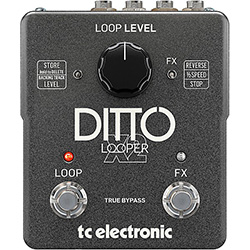
Description: The Ditto X2 builds on the simplicity of the original Ditto while adding crucial features for live performance. It’s designed for guitarists who want high-quality looping without complexity.
Key Features:
- 5 minutes of loop time
- Stereo input/output
- Two footswitches for stop/clear functions
- Loop import/export via USB
- FX toggle switch with reverse and half-speed effects
- True bypass switching
- Analog-dry-through
Pros:
- Outstanding audio quality
- Simple, intuitive interface
- Backup loops via USB
- Small footprint
- True bypass preserves tone
- Dedicated stop button
- Loop effects add creative possibilities
Cons:
- Limited storage compared to larger units
- No built-in rhythm tracks
- Cannot store multiple loops
- Basic effects selection
- No XLR input for vocals
3. EHX 720 Stereo Looper
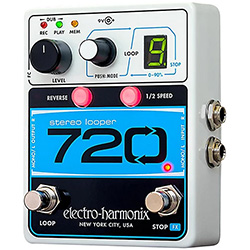
Description: The Electro-Harmonix 720 offers an excellent balance of features and simplicity, with enough storage for complex performances while maintaining an intuitive interface.
Key Features:
- 12 minutes of total recording time
- 10 independent loop banks
- Stereo input/output
- Reverse and half-speed effects
- Undo/redo functionality
- Silent footswitches
- Loop progress LED display
Pros:
- Multiple loop storage banks
- High-quality sound reproduction
- Compact design
- Intuitive controls
- Silent operation
- Affordable price point
- Reliable build quality
Cons:
- No USB connectivity
- Limited effects options
- No rhythm tracks
- Can’t sync with external devices
- No phantom power for microphones
4. Boss RC-500
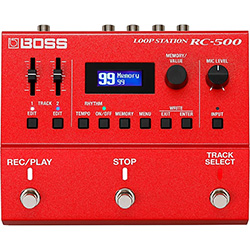
Description: The Boss RC-500 is a premium dual-track loop station that represents the culmination of Boss’s looping technology. It offers sophisticated features in a professional-grade stereo looper pedal, combining intuitive operation with deep functionality. The RC-500 is designed for serious musicians who need extensive control over their loops while maintaining professional audio quality. It serves as both a powerful practice tool and a versatile performance instrument, capable of creating complex layered arrangements.
Key Features:
- 32-bit AD/DA conversion with 32-bit floating-point processing
- Dual stereo tracks with 13 hours total recording time
- 99 phrase memories with unlimited overdubbing
- Built-in rhythm generator with 57 drum patterns, 7 drum kits
- Dedicated track faders for real-time volume control
- Large backlit LCD display
- Input/output routing options for stereo or mono
- Rhythm guide with accent function
- WAV import/export via USB
- MIDI sync capabilities
- Onboard effects (Track FX and Loop FX)
- Input select for mic/line switching
- Three footswitches for intuitive control
- Count-in function for precise loop timing
- Quantize and Auto-recording functions
Pros:
- Professional audio quality with 32-bit processing
- Independent track controls with physical faders
- Extensive memory storage capacity
- Intuitive interface with clear visual feedback
- Versatile I/O options for various setups
- Comprehensive MIDI implementation
- High-quality rhythm sounds
- Multiple stop modes for creative performance
- Robust build quality
- Advanced synchronization capabilities
- External footswitch compatibility
- Flexible routing options
- Clear, informative LCD display
- USB connectivity for backup and file transfer
- Individual track reverse function
Cons:
- Relatively expensive
- Significant footprint on pedalboard
- Complex features require learning curve
- No battery power option
- Menu diving needed for some functions
- Limited built-in effects compared to some competitors
- Rhythm section not as extensive as RC-10R
- Can be overwhelming for beginners
- No wireless connectivity
- External footswitch required for some functions
5. Boss RC-1 Loop Station
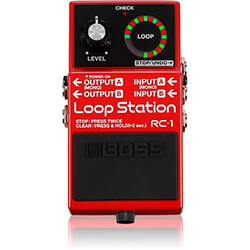
Description: The Boss RC-1 is the perfect entry point into looping, offering essential features in a straightforward, user-friendly package.
Key Features:
- 12 minutes of stereo recording
- LED loop indicator display
- Stereo inputs and outputs
- External footswitch compatibility
- True stereo signal path
- Memory retention when powered off
- Runs on battery or AC adapter
Pros:
- Very user-friendly
- Clear visual feedback
- Affordable price point
- Built to last
- Compact size
- Stereo operation
- Battery powered option
Cons:
- Basic features only
- Single loop storage
- No USB connectivity
- No effects
- No rhythm tracks
- Limited control options
- No undo function
6. Pigtronix Infinity Looper
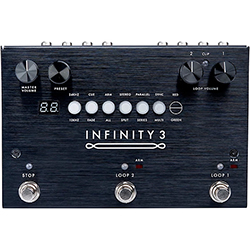
Description: The Pigtronix Infinity is a professional-grade looper designed for advanced users who need precise control and synchronization options.
Key Features:
- Two independent loop engines
- Parallel or series operation
- MIDI clock sync
- Multiple stop modes
- Reverse and octave effects
- Decay control
- Preset saving capability
Pros:
- Professional audio quality
- Extensive routing options
- Precise synchronization
- Versatile stop modes
- Decay feature for transitions
- Expandable via MIDI
- Preset memory
Cons:
- Premium price point
- Complex operation
- Large footprint
- Requires power supply
- Steep learning curve
- No built-in rhythms
- No USB connectivity
7. DigiTech JamMan Solo HD

Description: The DigiTech JamMan Solo HD is a compact yet powerful looper pedal that combines extensive storage capabilities with straightforward operation. It’s designed to offer professional-grade looping features in a pedalboard-friendly format. The pedal stands out for its significant storage capacity and the ability to organize loops into folders, making it particularly useful for performers who need to access multiple loops during sets.
Key Features:
- Over 35 minutes of stereo recording time (CD quality)
- Storage for up to 200 internal loops
- Micro SD card slot for additional storage
- Single pedal stereo looping
- Auto-Quantize feature
- Auto-Record function
- Rhythm guide with multiple time signatures
- Three stop modes
- JamSync for connecting multiple JamMan units
- USB connectivity for loop transfer
- True stereo I/O
- Built-in metronome
- Single footswitch design
- Optional FS3X footswitch compatibility
- Time stretching capability
Pros:
- Extensive storage capacity
- Expandable memory via SD card
- High-quality audio recording
- Intuitive single-button operation
- Multiple stop modes for flexibility
- Computer connectivity for loop management
- Compact footprint
- Solid build quality
- Auto-Quantize helps maintain timing
- Clear LED display
- Affordable price point
- Good rhythm guide options
- True stereo operation
- Can sync with other JamMan pedals
- Easy file transfer via USB
Cons:
- Single footswitch limits real-time control
- Menu navigation can be cumbersome
- Additional footswitch needed for full functionality
- Basic rhythm sounds
- Display can be hard to read in bright light
- No built-in effects
- File management can be complex
- Learning curve for advanced features
- No XLR input
- Limited one-shot playback options
- Memory card not included
- No MIDI sync in basic setup
8. MXR Clone Looper
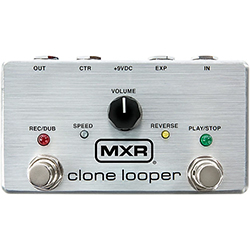
Description: The MXR Clone Looper offers studio-quality sound in a compact package, focusing on essential features executed perfectly.
Key Features:
- 6 minutes of recording time
- LED status display
- True bypass switching
- Play-once mode
- Unlimited overdubs
- Expression pedal input
- 88.2kHz sampling rate
Pros:
- Excellent sound quality
- Simple operation
- Compact size
- True bypass
- Clear visual feedback
- Expression pedal compatible
- High sampling rate
Cons:
- Limited recording time
- No storage banks
- Basic feature set
- No USB connection
- No effects
- Single loop only
- No rhythm section
9. Boomerang III Phrase Sampler
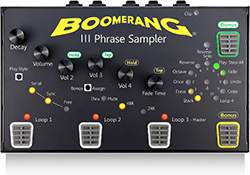
Description: The Boomerang III is a professional looping powerhouse, offering three independent loops with sophisticated synchronization and routing options.
Key Features:
- Three independent loop channels
- Multiple loop modes
- Serial or parallel operation
- Fade control
- Copy loop function
- Optional tap tempo
- Expression pedal input
Pros:
- Professional sound quality
- Versatile routing options
- Low latency
- Independent loop control
- Fade functionality
- Expandable control
- Built like a tank
Cons:
- Very expensive
- Large size
- Complex operation
- No USB connectivity
- No rhythm tracks
- No effects
- Requires dedicated power
10. DigiTech Trio+
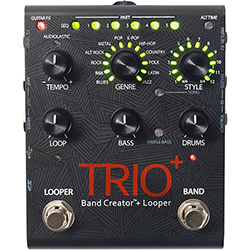
Description: The DigiTech TRIO+ is a unique pedal that combines intelligent band creation with looping capabilities. It’s designed to create automatic bass and drum accompaniment based on your playing style while also offering full looping functionality. The TRIO+ stands out for its ability to learn your chord progressions and generate complementary backing tracks, making it an powerful tool for practice, songwriting, and performance.
Key Features:
- Automatic bass and drum accompaniment
- Independent guitar looper with up to 5 minutes recording time
- 12 music genres with 12 style variations each
- Built-in tempo control
- Three parts per song (verse, chorus, bridge)
- Micro SD card slot for storing songs
- Built-in mixer for band/loop levels
- Tempo control via tap or knob
- Sync’d loop and band playback
- Alternate time signatures
- Simple/Complex variations for each style
- Built-in effects for bass tone
- Dedicated FX loop
- Headphone output
- Aux input for backing tracks
Pros:
- Creates realistic bass and drum parts
- Intuitive genre selection
- High-quality backing tracks
- Multiple musical styles available
- Flexible song part management
- Good sound quality
- Built-in mixer controls
- Easy to use basic functions
- Excellent practice tool
- Tempo adjustment options
- Storage for multiple songs
- Headphone practice option
- Can sequence different parts
- Dedicated loop controls
- Professional sound quality
Cons:
- Relatively expensive
- Large footprint
- Steep learning curve for advanced features
- Limited looping time compared to dedicated loopers
- Requires power supply (no battery option)
- Complex operation for live use
- Generated bands may need multiple takes to sound natural
- Memory card required for storage
- No wireless connectivity
- Limited to certain chord progressions
- No XLR input
- Can be overwhelming for beginners
Best Looper Pedal Comparison Chart
| Feature/Spec | Boss RC-10R | TC Ditto X2 | EHX 720 | Boss RC-500 | Boss RC-1 | Pigtronix Infinity | DigiTech JamMan HD | MXR Clone | Boomerang III | DigiTech Trio+ |
|---|---|---|---|---|---|---|---|---|---|---|
| Recording Time | 99 hours | 5 minutes | 12 minutes | 13 Hours | 12 minutes | Unlimited* | 35 minutes (expandable with SD card) | 6 minutes | Unlimited* | 5 minutes (Loop Only) |
| Number of Tracks | 2 | 1 | 1 | 2 | 1 | 2 | 1 | 1 | 3 | 1 (plus auto-generated bass and drums) |
| Loop Storage | 99 phrases | 1 | 10 | 99 Phrases | 1 | Variable | 200 | 1 | 4 | Limited by SD card |
| Stereo I/O | Yes | Yes | Yes | Yes | Yes | Yes | Yes | Yes | Yes | Yes |
| USB Connectivity | Yes | Yes | No | No | No | No | Yes | No | No | No |
| Built-in Effects | No | Yes (2) | Yes (2) | Yes (Track FX and Loop FX) | No | Yes | No | No | No | Yes (For Bass Sounds) |
| Rhythm Tracks | Yes (280+) | No | No | Yes (57 patterns, 7 kits) | No | No | Yes (metronome/rhythm guide) | No | No | Yes (intelligent drum creation) |
| True Bypass | No | Yes | Yes | No | Yes | Yes | Yes | Yes | No | Yes |
| Power Supply | AC Only | 9V/AC | 9V/AC | AC Only | 9V/AC | AC Only | 9V/AC | 9V/AC | AC Only | AC Only |
| Footswitches | 2 | 2 | 2 | 3 | 1 | 3 | 1 (expandable with optional FS3X) | 1 | 4 | 2 |
| MIDI Sync | Yes | No | No | Yes | No | Yes | No | No | Yes | No |
| Display Type | LCD | LED | LED | LCD Backlit | LED Ring | LED | LED | LED | LED | LED |
| Memory Expansion | No | No | No | No | No | No | Yes (Micro SD) | No | No | Yes (Micro SD) |
| Price Range | $$$$ | $$ | $$ | $$$$ | $ | $$$$$ | $$ | $$ | $$$$$ | $$$$ |
| Size (Footprint) | Medium | Medium | Medium | Large | Small | Large | Small | Small | Large | Large |
| XLR Input | No | No | No | Yes | No | No | No | No | No | No |
| Undo/Redo | Yes | Yes | Yes | Yes | No | Yes | Yes | Yes | Yes | Yes |
Price Range Key:
- $ = Under $100
- $$ = $100-200
- $$$ = $200-300
- $$$$ = $300-400
- $$$$$ = $400+
Additional Notes:
- *Unlimited recording time refers to being limited only by available memory
- All audio quality is 24-bit except where noted
- Size categories: Mini (smallest), Small, Medium, Large
- Some features may vary by firmware version
- Prices are approximate and may vary by region/retailer
Key Differentiators:
- Best for Beginners: Boss RC-1, TC Ditto
- Best for Live Performance: Boss RC-30, Pigtronix Infinity
- Best Value: EHX 720
- Most Features: Boss RC-30, Pigtronix Infinity
- Most Professional: Boomerang III
- Most Compact: TC Ditto
- Best Storage: DigiTech JamMan
- Best Sound Quality: Boomerang III, Pigtronix Infinity
Understanding Looper Pedals
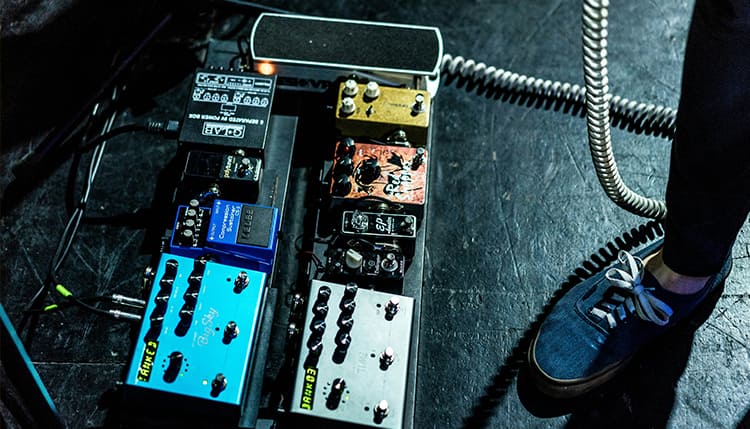
Man, I remember the first time I stumbled upon a looper pedal at a local music shop. I was like a kid in a candy store!
These little boxes of wonder have completely changed the game for musicians like me.
So, what exactly is a looper pedal? Well, it’s basically a magical device that lets you record a snippet of your playing and then loop it back continuously. Pretty neat, huh?
I gotta tell ya, when I first tried one out, I was a total mess. My timing was off, and I ended up creating this awful, jumbled mess of sound.
But hey, that’s part of the learning process, right? Once you get the hang of it, though, these pedals can seriously revolutionize your live performances and recording sessions.
The cool thing about looper pedals is that they’ve got a few key components that make them tick.
First up, you’ve got your footswitches. These bad boys are what you use to control the recording, playback, and stopping of your loops.
Then there’s the storage – that’s where all your sonic goodness gets saved.
And don’t forget about connectivity – most modern loopers can hook up to all sorts of gear.
Now, let’s take a quick trip down memory lane. Looper pedals have come a long way since their inception.
Back in the day, they were these clunky, complicated beasts that only the most tech-savvy musicians could tame.
But now? They’re sleek, user-friendly, and packed with features that would’ve blown our minds just a few years ago.
- Early loopers were often limited to short loop times
- Digital technology revolutionized looper capabilities
- Modern loopers offer extended loop times and multi-track recording
I’ve gotta say, the evolution of guitar pedals has been pretty incredible to witness. It’s like watching a caterpillar transform into a butterfly, except in this case, the butterfly can create mind-bending soundscapes at the stomp of a foot!
So, whether you’re a guitar player, bassist, vocalist, or even a didgeridoo enthusiast (hey, no judgment here!), a looper pedal can open up a whole new world of sonic possibilities.
It’s like having a full band at your fingertips, minus the drama and scheduling conflicts. Trust me, once you start exploring the world of looping, you’ll wonder how you ever lived without it!
Features to Look for in the Best Looper Pedal
Alright, folks, let’s dive into the nitty-gritty of what makes a looper pedal truly shine. Trust me, I’ve been through my fair share of pedals, and I’ve learned a thing or two about what separates the wheat from the chaff.
Storage
First up, we’ve got loop duration and storage capacity. This is a biggie, folks.
I remember when I first started out, I bought this cheap looper that could only record for like 30 seconds. Talk about a buzzkill!
These days, I won’t even look at a pedal that can’t give me at least a few minutes of loop time.
And storage? The more, the merrier. You never know when inspiration’s gonna strike, and you wanna be able to save those golden ideas.
Sound Quality
Next on the list is sound quality and bit depth. Now, I’m no audio engineer, but I can tell you that there’s a world of difference between a looper that captures your tone faithfully and one that makes you sound like you’re playing through a tin can.
Look for pedals with at least 24-bit audio quality – your ears will thank you.
Footswitch
Now, let’s talk about footswitches. I’ve got big ol’ clumsy feet, so I need a pedal with switches I can’t miss.
The number of switches is important too. More switches usually means more control, but it can also mean a steeper learning curve.
It’s all about finding that sweet spot between functionality and ease of use.
- Single switch loopers are great for beginners
- Double switch loopers offer more control
- Multi-switch loopers are ideal for complex performances
Effects
One feature that’s often overlooked is additional effects and built-in drum patterns.
Let me tell ya, having a basic drumbeat to loop over can be a game-changer when you’re practicing or writing.
And don’t even get me started on the creative possibilities that come with onboard effects!
Connectivity
Connectivity is another crucial factor. MIDI and USB connections can open up a whole new world of possibilities, especially if you’re into integrating your looper with other gear or your computer.
I once had this gig where my looper’s MIDI sync saved my bacon when playing with a backing track. Good times!
Power
Lastly, don’t forget about battery life and power options. There’s nothing worse than having your pedal die mid-performance because you forgot to plug it in.
I learned that lesson the hard way, let me tell you! Look for pedals with long battery life or, even better, ones that can run on a standard 9V power supply.
Remember, the best looper pedal for you might not be the most expensive or feature-packed one out there.
It’s all about finding the right balance of features that suit your playing style and needs.
And hey, if you’re anything like me, you’ll probably end up with a few different loopers before you find your perfect match. But that’s half the fun, right?
How to Choose the Best Looper Pedal for Your Needs
Alright, folks, let’s get down to brass tacks. Choosing the right looper pedal can feel like trying to find a needle in a haystack, but don’t worry – I’ve got your back.
After years of trial and error (and more than a few impulse purchases), I’ve learned a thing or two about picking the perfect looper.
Skill Level and Style
First things first, you gotta assess your skill level and musical style.
Are you a beginner just dipping your toes into the looping world, or are you a seasoned pro looking to push the boundaries?
Your skill level will play a big role in determining which features you’ll actually use and which ones will just collect dust.
Trust me, I learned this the hard way when I bought a super advanced looper way back when and spent more time scratching my head than making music!
Requirements
Next up, consider your performance setup and requirements. Are you a bedroom player, or do you gig regularly?
Do you need something that can integrate with a complex pedalboard, or are you looking for a standalone unit?
I remember this one time I bought this fancy looper with all sorts of inputs and outputs, only to realize I had no use for most of them in my simple setup. Talk about overkill!
Budget
Now, let’s talk about the elephant in the room – your budget. Looper pedals can range from dirt cheap to “do I really need both kidneys?” expensive.
It’s important to find a balance between features and cost. But here’s a pro tip: don’t just think about your current needs. Consider your long-term goals too. Sometimes it’s worth spending a bit more on a pedal that you can grow into.
- Set a realistic budget
- Consider future-proofing your purchase
- Look for sales or second-hand options
One of the best ways to narrow down your choices is by reading user reviews and watching demo videos.
But here’s the catch – take everything with a grain of salt. What works for one player might not work for you.
I once bought a looper based solely on a glowing review, only to find out it didn’t jive with my playing style at all. Lesson learned!
If possible, try to get hands-on experience with the pedals you’re considering.
Many music stores will let you test out gear, or you might even be able to rent a pedal for a short period. There’s no substitute for actually playing with a looper to see if it feels right.
Lastly, don’t be afraid to ask for advice from other musicians or even reach out to the manufacturers directly.
Most of ’em are more than happy to answer questions and help you find the right fit.
Remember, choosing a looper pedal is a personal journey. What works for me might not work for you, and that’s okay!
The key is to find a pedal that inspires you to create and helps you achieve your musical goals.
And hey, if you end up with a few different loopers along the way, just consider it part of the learning process. After all, half the fun is in the journey, right?
Tips and Tricks for Mastering Your Looper Pedal
Alright, looper enthusiasts, gather ’round! It’s time to spill the beans on some tips and tricks that’ll take your looping game from “meh” to “mind-blowing”.
I’ve stumbled my way through countless hours of practice and performances, and boy, have I learned a thing or two along the way.
Basic Looping Techniques
Let’s start with some basic looping techniques for beginners. First things first, timing is everything. I can’t stress this enough.
When I first started out, my loops sounded like a drunken marching band. The key is to practice, practice, practice.
Start with simple, short phrases and focus on hitting that loop button right on the beat. It’s like riding a bike – once you get it, you’ll never forget.
- Start with simple, repetitive phrases
- Use a metronome to improve your timing
- Practice transitioning between loops smoothly
Advance Looping Techniques
Now, for you ambitious folks out there, let’s talk about some advanced looping strategies for creating complex compositions.
One technique I love is layering different parts to build up a full arrangement.
Start with a rhythm part, then add a bassline, some chords, and finally a lead. It’s like being your own one-man band!
Another cool trick is using your looper for sound design. Try recording some unconventional sounds – maybe some percussive taps on your guitar or some weird vocal noises.
Layer these up and suddenly you’ve got a unique backing track that no one else has.
I once created an entire song using nothing but looped pencil taps and humming. It was… interesting, to say the least.
Looper Pedal Effects
When it comes to integrating your looper pedal with other effects, the sky’s the limit.
Try placing your looper at different points in your signal chain to see how it affects your sound. I love putting my looper after my delay pedal – you can create some seriously spacey, ambient textures that way.
Here’s a fun practice exercise to improve your timing and creativity: Set a timer for 5 minutes and challenge yourself to create a complete song loop within that time. It’s amazing what you can come up with when you’re under pressure!
Mistakes to Avoid
Now, let’s talk about some common mistakes to avoid when using a looper pedal. One biggie is overcomplicating things.
It’s easy to get carried away and end up with a muddy mess of sound. Remember, sometimes less is more.
Another mistake is relying too heavily on your looper. Don’t forget to interact with your loops in real-time – that’s where the real magic happens!
- Don’t overcrowd your loops
- Practice stopping loops cleanly
- Experiment with different loop lengths
One last tip: don’t be afraid to make mistakes. Some of the coolest musical ideas come from happy accidents. I once accidentally hit my loop pedal mid-solo and ended up creating this awesome rhythmic pattern that became the basis for a whole new song.
Remember, mastering your looper pedal is a journey, not a destination. Keep experimenting, keep practicing, and most importantly, keep having fun. Before you know it, you’ll be creating loops that’ll blow your own mind. And when that happens, well, there’s no feeling quite like it in the world!
Conclusion
Whew! We’ve taken quite a journey through the world of some of the best looper pedals, haven’t we?
From understanding the basics to exploring top-notch options and mastering techniques, you’re now equipped to make an informed decision on the best looper pedal for your musical adventures.
Remember, the right looper can be a game-changer, opening up a whole new realm of sonic possibilities.
So go ahead, experiment, create, and most importantly, have fun!
Your perfect loop awaits – it’s time to step on that pedal and let your creativity soar. Happy looping!

